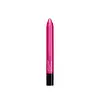What's inside
What's inside
 Key Ingredients
Key Ingredients

 Benefits
Benefits

 Concerns
Concerns

 Ingredients Side-by-side
Ingredients Side-by-side

Mica
Cosmetic ColorantTalc
AbrasiveSilica
AbrasiveCI 77891
Cosmetic ColorantCI 77492
Cosmetic ColorantDimethicone
EmollientCI 77491
Cosmetic ColorantSynthetic Wax
AbrasiveCI 77499
Cosmetic ColorantParaffinum Liquidum
EmollientMagnesium Stearate
Cosmetic ColorantBoron Nitride
AbsorbentMethicone
EmollientAluminum Hydroxide
EmollientCaprylic/Capric Triglyceride
MaskingCaprylyl Glycol
EmollientEthylhexyl Palmitate
EmollientEthylhexylglycerin
Skin ConditioningPolyisobutene
Diethylhexyl Syringylidenemalonate
Skin ProtectingPentaerythrityl Tetra-Di-T-Butyl Hydroxyhydrocinnamate
AntioxidantSorbic Acid
PreservativePhenoxyethanol
PreservativeMica, Talc, Silica, CI 77891, CI 77492, Dimethicone, CI 77491, Synthetic Wax, CI 77499, Paraffinum Liquidum, Magnesium Stearate, Boron Nitride, Methicone, Aluminum Hydroxide, Caprylic/Capric Triglyceride, Caprylyl Glycol, Ethylhexyl Palmitate, Ethylhexylglycerin, Polyisobutene, Diethylhexyl Syringylidenemalonate, Pentaerythrityl Tetra-Di-T-Butyl Hydroxyhydrocinnamate, Sorbic Acid, Phenoxyethanol
Isononyl Isononanoate
EmollientTriheptanoin
Skin ConditioningC12-15 Alkyl Benzoate
AntimicrobialOzokerite
Emulsion StabilisingHydrogenated Coco-Glycerides
EmollientSynthetic Wax
AbrasiveHydrogenated Microcrystalline Wax
Emulsion StabilisingHydrogenated Coconut Oil
EmollientHydrogenated Styrene/Methylstyrene/Indene Copolymer
Silica
AbrasiveMethyl Methacrylate Crosspolymer
Calcium Aluminum Borosilicate
Methoxy PEG-17/Methoxy PEG-11/Hdi Isocyanurate Trimer Crosspolymer
Polyethylene
AbrasivePhytosteryl Oleate
Skin ConditioningAstrocaryum Murumuru Seed Butter
EmollientPhytosteryl Macadamiate
Skin ConditioningHelianthus Annuus Seed Oil
EmollientSorbic Acid
PreservativePhenoxyethanol
PreservativePassiflora Edulis Seed Oil
EmollientSchinziophyton Rautanenii Kernel Oil
EmollientMacadamia Integrifolia Seed Oil
Skin ConditioningArgania Spinosa Kernel Oil
EmollientQuaternium-90 Bentonite
Tocopherol
AntioxidantTriethoxycaprylylsilane
Cocos Nucifera Oil
MaskingTin Oxide
AbrasivePentaerythrityl Tetra-Di-T-Butyl Hydroxyhydrocinnamate
AntioxidantGlycine Soja Oil
EmollientTitanium Dioxide
Cosmetic ColorantMica
Cosmetic ColorantCI 75470
Cosmetic ColorantIsononyl Isononanoate, Triheptanoin, C12-15 Alkyl Benzoate, Ozokerite, Hydrogenated Coco-Glycerides, Synthetic Wax, Hydrogenated Microcrystalline Wax, Hydrogenated Coconut Oil, Hydrogenated Styrene/Methylstyrene/Indene Copolymer, Silica, Methyl Methacrylate Crosspolymer, Calcium Aluminum Borosilicate, Methoxy PEG-17/Methoxy PEG-11/Hdi Isocyanurate Trimer Crosspolymer, Polyethylene, Phytosteryl Oleate, Astrocaryum Murumuru Seed Butter, Phytosteryl Macadamiate, Helianthus Annuus Seed Oil, Sorbic Acid, Phenoxyethanol, Passiflora Edulis Seed Oil, Schinziophyton Rautanenii Kernel Oil, Macadamia Integrifolia Seed Oil, Argania Spinosa Kernel Oil, Quaternium-90 Bentonite, Tocopherol, Triethoxycaprylylsilane, Cocos Nucifera Oil, Tin Oxide, Pentaerythrityl Tetra-Di-T-Butyl Hydroxyhydrocinnamate, Glycine Soja Oil, Titanium Dioxide, Mica, CI 75470
Alternatives
Ingredients Explained
These ingredients are found in both products.
Ingredients higher up in an ingredient list are typically present in a larger amount.
Mica is a naturally occurring mineral used to add shimmer and color in cosmetics. It can also help improve the texture of a product or give it an opaque, white/silver color.
Serecite is the name for very fine but ragged grains of mica.
This ingredient is often coated with metal oxides like titanium dioxide. Trace amounts of heavy metals may be found in mica, but these metals are not harmful in our personal products.
Mica has been used since prehistoric times throughout the world. Ancient Egyptian, Indian, Greek, Roman, Aztec, and Chinese civilizations have used mica.
Learn more about MicaPentaerythrityl Tetra-Di-T-Butyl Hydroxyhydrocinnamate (long name, huh?) is a synthetic antioxidant.
It is used to help stabilize other antioxidants or prevent the color from changing in a product.
As an antioxidant, it helps fight free-radical molecules. Free-radical molecules are capable of damaging our cells and other genetic material. Thus, antioxidants may reduce the signs of aging.
This ingredient is oil-soluble.
Learn more about Pentaerythrityl Tetra-Di-T-Butyl HydroxyhydrocinnamatePhenoxyethanol is a preservative that has germicide, antimicrobial, and aromatic properties. Studies show that phenoxyethanol can prevent microbial growth. By itself, it has a scent that is similar to that of a rose.
It's often used in formulations along with Caprylyl Glycol to preserve the shelf life of products.
Silica, also known as silicon dioxide, is a naturally occurring mineral. It is used as a fine, spherical, and porous powder in cosmetics.
Though it has exfoliant properties, the function of silica varies depending on the product.
The unique structure of silica enhances the spreadability and adds smoothness, making it a great texture enhancer.
It is also used as an active carrier, emulsifier, and mattifier due to its ability to absorb excess oil.
In some products, tiny microneedles called spicules are made from silica or hydrolyzed sponge. When you rub them in, they lightly polish away dead skin layers and enhance the penetration of active ingredients.
Learn more about SilicaSorbic Acid is a preservative. It is the most commonly used food preservative in the world.
Sorbic Acid is a natural antibiotic and highly effective at preventing the growth of fungus. It is less effective against bacteria.
Potassium Sorbate, another commonly-used preservative, is the potassium salt of Sorbic Acid.
Sorbic Acid may worsen eczema. We recommend speaking with a professional if you have any concerns.
Potassium sorbate and sorbic acid can be found in baked goods, cheeses, dried meats, dried fruit, ice cream, pickles, wine, yogurt, and more.
Learn more about Sorbic AcidSynthetic Wax is created from fossil fuels such as natural gas. It is used to enhance texture, adjust pH, and as an occlusive.
It may also be used as an abrasive ingredient to exfoliate the skin.
Synthetic Wax may not be fungal acne safe.
Learn more about Synthetic Wax